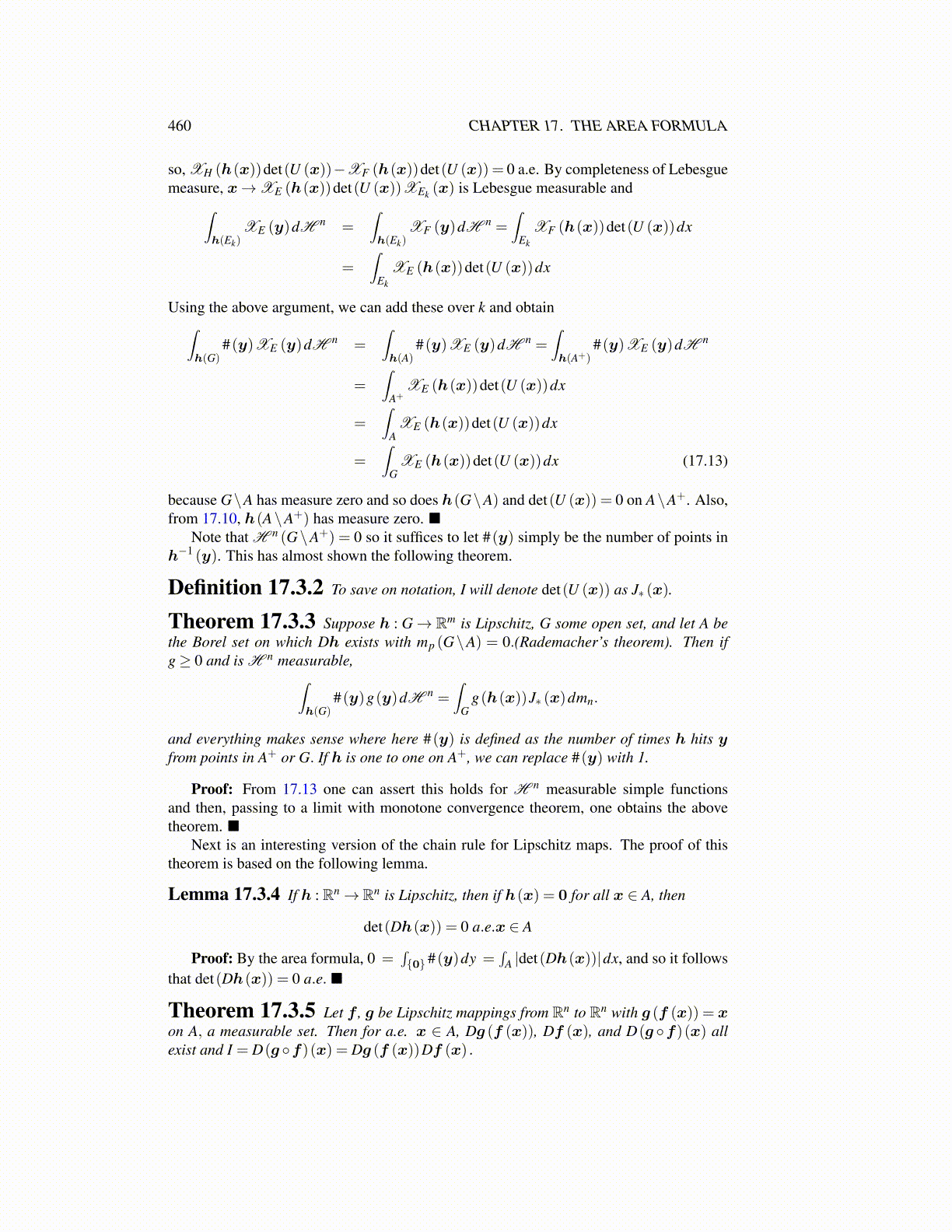
460 CHAPTER 17. THE AREA FORMULA
so, XH (h(x))det(U (x))−XF (h(x))det(U (x)) = 0 a.e. By completeness of Lebesguemeasure, x→XE (h(x))det(U (x))XEk (x) is Lebesgue measurable and∫
h(Ek)XE (y)dH n =
∫h(Ek)
XF (y)dH n =∫
Ek
XF (h(x))det(U (x))dx
=∫
Ek
XE (h(x))det(U (x))dx
Using the above argument, we can add these over k and obtain∫h(G)
#(y)XE (y)dH n =∫h(A)
#(y)XE (y)dH n =∫h(A+)
#(y)XE (y)dH n
=∫
A+XE (h(x))det(U (x))dx
=∫
AXE (h(x))det(U (x))dx
=∫
GXE (h(x))det(U (x))dx (17.13)
because G\A has measure zero and so does h(G\A) and det(U (x)) = 0 on A\A+. Also,from 17.10, h(A\A+) has measure zero. ■
Note that H n (G\A+) = 0 so it suffices to let #(y) simply be the number of points inh−1 (y). This has almost shown the following theorem.
Definition 17.3.2 To save on notation, I will denote det(U (x)) as J∗ (x).
Theorem 17.3.3 Suppose h : G→ Rm is Lipschitz, G some open set, and let A bethe Borel set on which Dh exists with mp (G\A) = 0.(Rademacher’s theorem). Then ifg≥ 0 and is H n measurable,∫
h(G)#(y)g(y)dH n =
∫G
g(h(x))J∗ (x)dmn.
and everything makes sense where here #(y) is defined as the number of times h hits yfrom points in A+ or G. If h is one to one on A+, we can replace #(y) with 1.
Proof: From 17.13 one can assert this holds for H n measurable simple functionsand then, passing to a limit with monotone convergence theorem, one obtains the abovetheorem. ■
Next is an interesting version of the chain rule for Lipschitz maps. The proof of thistheorem is based on the following lemma.
Lemma 17.3.4 If h : Rn→ Rn is Lipschitz, then if h(x) = 0 for all x ∈ A, then
det(Dh(x)) = 0 a.e.x ∈ A
Proof: By the area formula, 0 =∫{0} #(y)dy =
∫A |det(Dh(x))|dx, and so it follows
that det(Dh(x)) = 0 a.e. ■
Theorem 17.3.5 Let f , g be Lipschitz mappings from Rn to Rn with g (f (x)) = xon A, a measurable set. Then for a.e. x ∈ A, Dg (f (x)), Df (x), and D(g ◦f)(x) allexist and I = D(g ◦f)(x) = Dg (f (x))Df (x) .